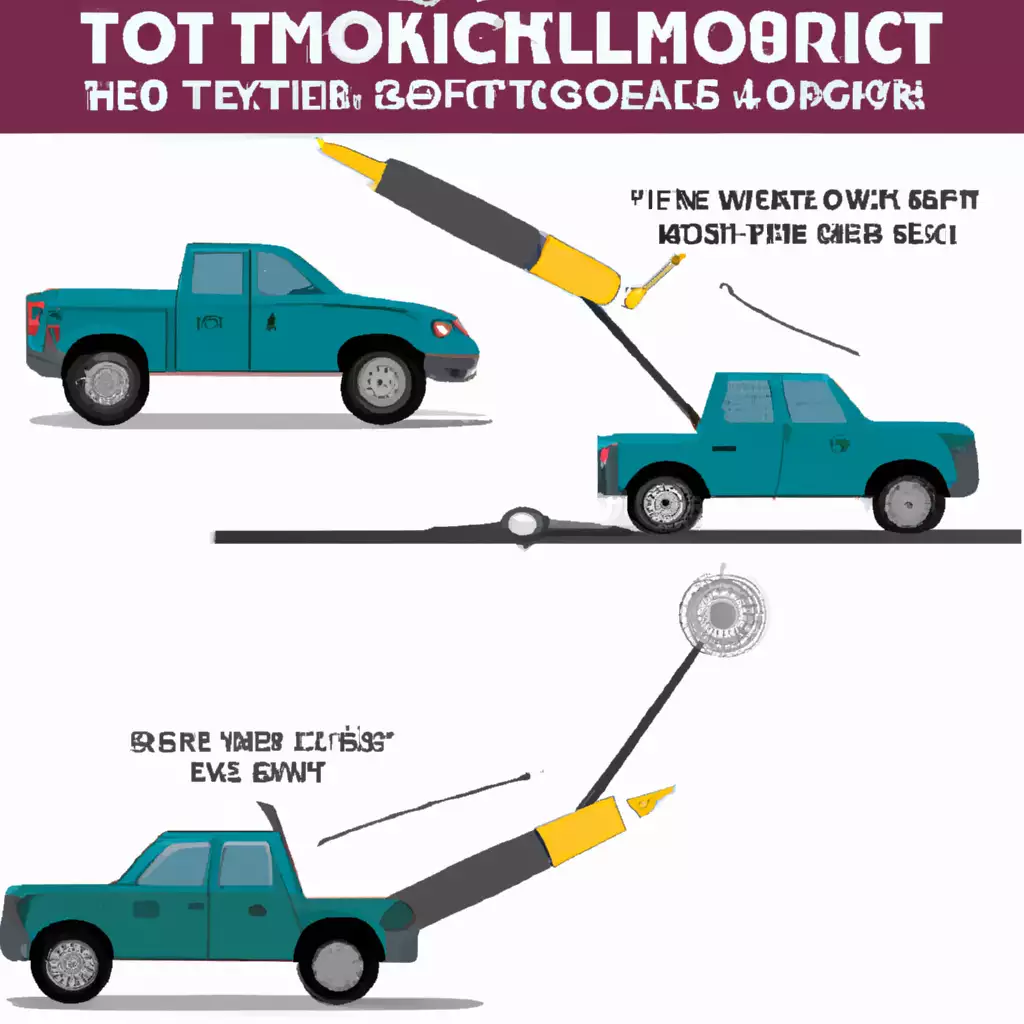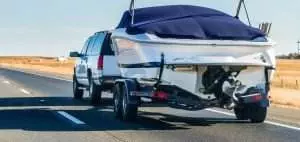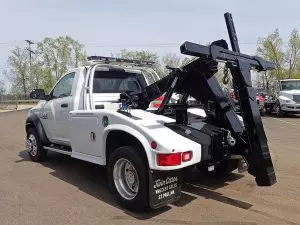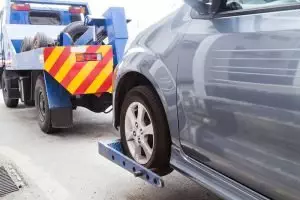When it comes to towing a vehicle, one common concern arises: do you need to disconnect the driveshaft? This article explores the necessity of disconnecting the driveshaft for safe and efficient towing. By breaking down the potential risks and benefits of taking this step, you can make an informed decision when it comes to towing your vehicle.
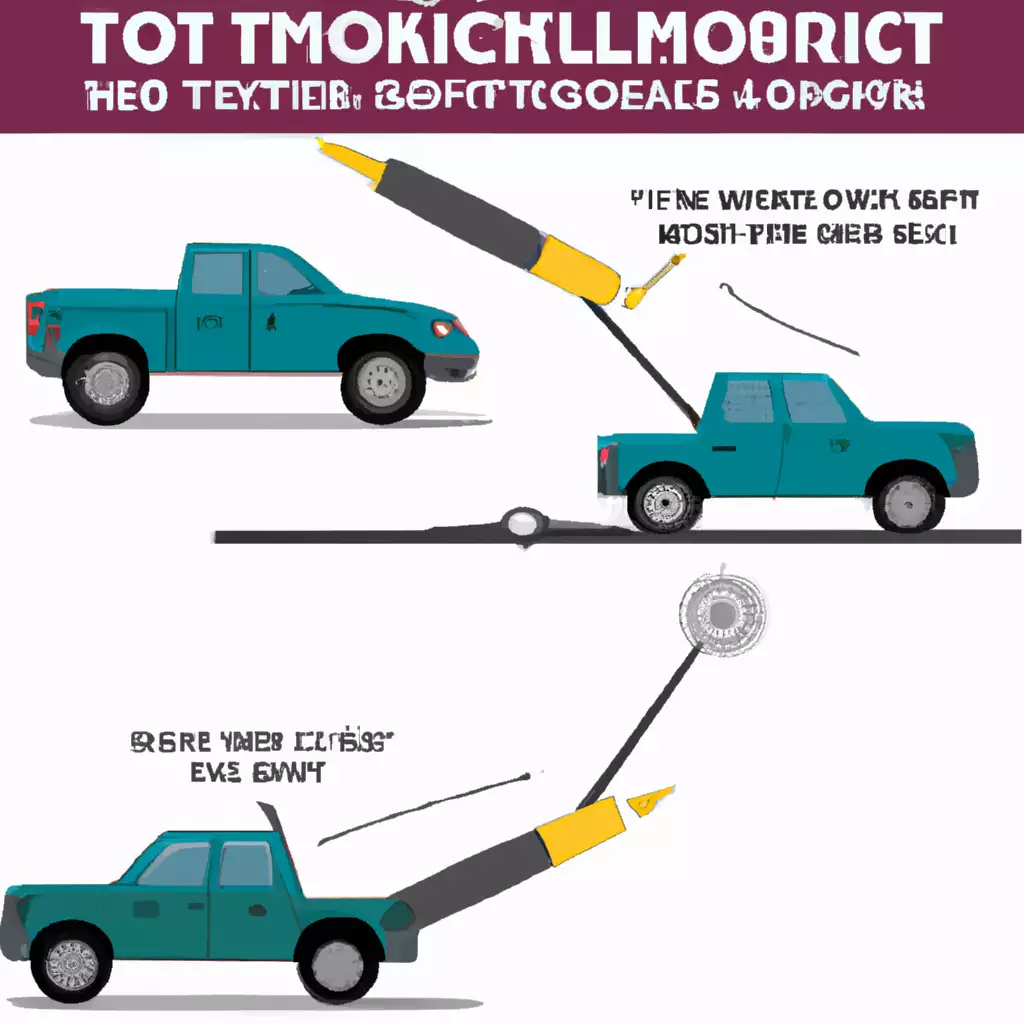
Introduction
When it comes to towing a vehicle, there are several important factors to consider in order to ensure a safe and efficient process. One of the key considerations is whether or not to disconnect the driveshaft. The driveshaft is a vital component of a vehicle’s powertrain system, and understanding its function and importance is essential for making informed decisions when it comes to towing. In this article, we will delve into the details of the driveshaft, the different types of towing, considerations for towing, the process of disconnecting the driveshaft, as well as the benefits, drawbacks, and alternatives to disconnecting the driveshaft. By the end of this comprehensive guide, you will have a clear understanding of the best practices for towing a vehicle without compromising its drivetrain.
Understanding the Driveshaft
The driveshaft, also known as the propeller shaft, is a mechanical component that transmits torque from the engine to the wheels of a vehicle. It plays a crucial role in the powertrain system, allowing the vehicle to move forward or backward. The driveshaft is typically made of strong, durable materials such as steel or aluminum and is connected to both the transmission and the differential. This connection allows the driveshaft to transfer the rotational energy of the engine to the wheels, propelling the vehicle forward.
Components of a Driveshaft
A driveshaft consists of several components that work together to ensure proper power transmission. These components include the driveshaft tube, universal joints, a slip yoke, and a yoke or flange for connecting to the transmission and differential. The driveshaft tube, usually cylindrical in shape, is responsible for housing the other components and providing structural integrity. The universal joints allow for flexibility and smooth rotation of the driveshaft, even when the angles between the transmission, differential, and driveshaft change. The slip yoke allows for slight length adjustments during suspension movement, preventing binding or excessive tension.
Function of a Driveshaft
The primary function of the driveshaft is to transmit torque from the engine to the wheels, converting the rotational energy of the engine into motion. As the engine produces power, it is transferred through the transmission to the driveshaft. The driveshaft then transmits this rotational force to the wheels, enabling the vehicle to move. Without a properly functioning driveshaft, the power generated by the engine would not reach the wheels, rendering the vehicle immobile.
Types of Towing
When it comes to towing a vehicle, there are several methods to choose from, depending on the specific circumstances and requirements. The method chosen can have implications for the drivetrain system, including whether or not to disconnect the driveshaft. Let’s explore the different types of towing commonly used.
Flatbed Towing
Flatbed towing involves loading the entire vehicle onto a flatbed trailer, which is then used to transport the vehicle to its destination. This method is generally considered the safest option, as it completely eliminates the risk of damage to the drivetrain. When using a flatbed, the vehicle remains stationary throughout the towing process, preventing any unnecessary wear and tear on components such as the driveshaft.
Two-Wheel Towing
Two-wheel towing, also known as tow dolly towing, involves lifting the front or rear wheels of the vehicle off the ground and securing them onto a tow dolly. The remaining wheels remain in contact with the road surface, allowing the vehicle to be towed to its destination. This method can be suitable for vehicles with front-wheel or rear-wheel drive configurations, as only two wheels are in motion during towing. However, in some cases, disconnecting the driveshaft might still be necessary, depending on the manufacturer’s recommendations and the specific vehicle.
Four-Wheel Towing
Four-wheel towing, also known as dinghy towing or flat towing, involves towing a vehicle with all four wheels on the ground. This method is commonly used for recreational vehicles (RVs) towing smaller vehicles behind them. Four-wheel towing can be convenient, as it eliminates the need for additional equipment such as tow dollies. However, when it comes to disconnecting the driveshaft, it depends on the specific vehicle and its manufacturer’s recommendations.
Considerations for Towing
When it comes to towing a vehicle, it is crucial to consider various factors to ensure a safe and successful towing experience. These considerations include the vehicle manufacturer’s recommendations, the type of transmission, and the towing capacity of the vehicle.
Vehicle Manufacturer Recommendations
One of the most important factors to consider when deciding whether to disconnect the driveshaft for towing is the vehicle manufacturer’s recommendations. Each vehicle model may have different towing guidelines, depending on factors such as drivetrain configuration, weight distribution, and transmission type. It is crucial to consult the owner’s manual or contact the manufacturer directly to understand the specific towing instructions and whether disconnecting the driveshaft is necessary.
Type of Transmission
The type of transmission in the vehicle can affect whether or not to disconnect the driveshaft for towing. Vehicles with manual transmissions typically do not require driveshaft disconnection, as the transmission can be placed in neutral, preventing the engine from transmitting power to the wheels. However, vehicles with automatic transmissions may require driveshaft disconnection to avoid potential damage to the transmission. This is because automatic transmissions continue to generate torque even when in neutral, exerting stress on the transmission components if the driveshaft remains connected.
Towing Capacity
The towing capacity of a vehicle is another crucial consideration. Towing a vehicle that exceeds its towing capacity can put excessive strain on the drivetrain components, including the driveshaft. This extra stress can lead to damage or premature wear and tear. It is essential to consult the vehicle’s owner’s manual or contact the manufacturer to determine the towing capacity and ensure it aligns with the weight and specifications of the vehicle being towed.
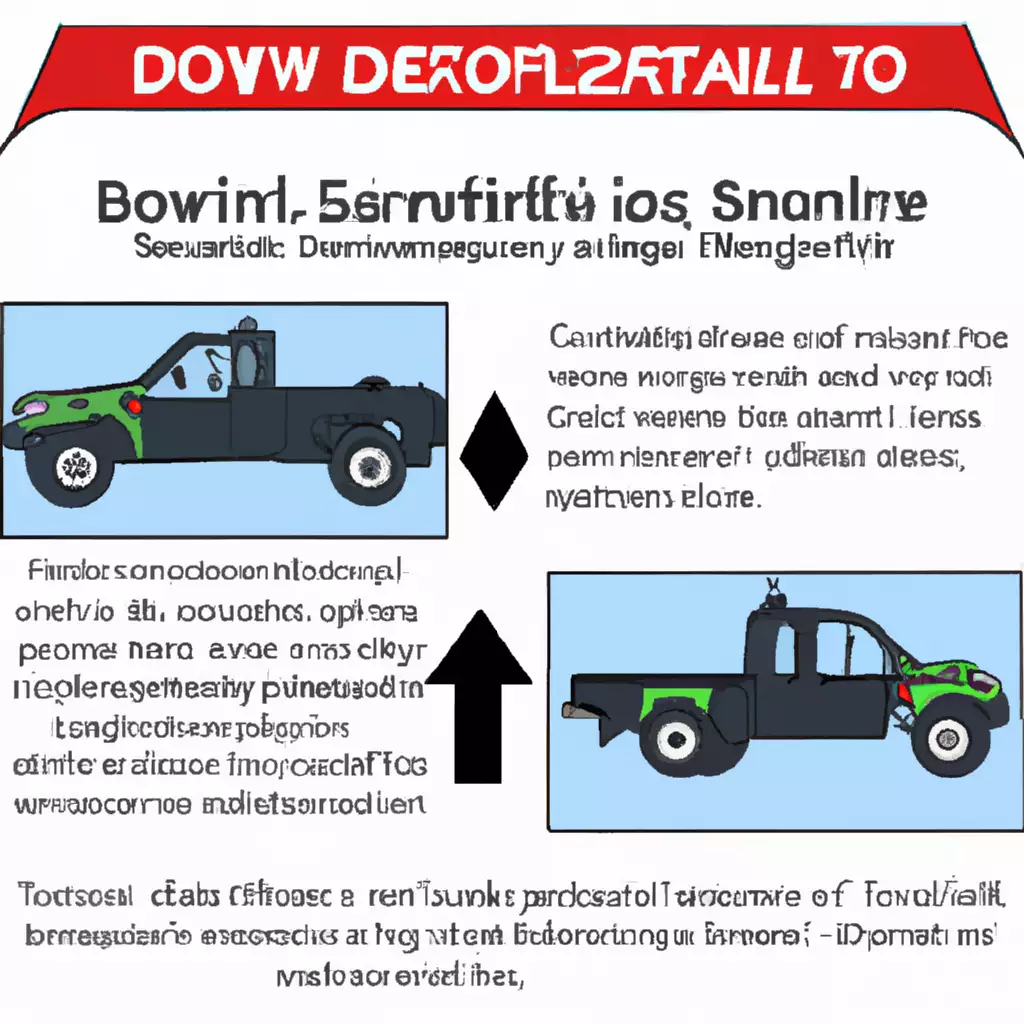
Disconnecting the Driveshaft
In certain situations, disconnecting the driveshaft before towing may be necessary to protect the transmission and drivetrain components from potential damage. Let’s explore when it may be necessary to disconnect the driveshaft and the tools and steps involved in the disconnection process.
When It May Be Necessary
Disconnecting the driveshaft is typically necessary when towing a vehicle with an automatic transmission, especially if the manufacturer recommends it. As mentioned earlier, automatic transmissions may still generate torque even when in neutral, which can strain the transmission components if the driveshaft remains connected. Furthermore, disconnecting the driveshaft may also be required for vehicles with all-wheel drive (AWD) or four-wheel drive (4WD) configurations to prevent damage to the transfer case or differential during towing.
Tools and Steps for Disconnecting the Driveshaft
Disconnecting the driveshaft requires specific tools and a step-by-step process to ensure a safe disconnection. The tools typically needed include a jack, jack stands, a socket set, wrenches, and possibly a pry bar or rubber mallet. The exact process may vary depending on the vehicle make and model, but it generally involves securing the vehicle with a jack and stands, locating the driveshaft, removing the bolts or fasteners that connect the driveshaft to the transmission and differential, and carefully sliding the driveshaft out of its connections.
Benefits of Disconnecting the Driveshaft
While disconnecting the driveshaft may require additional time and effort, it offers several significant benefits that make it a worthwhile consideration when towing a vehicle.
Preventing Transmission Damage
Disconnecting the driveshaft can help avoid potential damage to the transmission, especially for vehicles with automatic transmissions. By disconnecting the driveshaft, you eliminate the risk of the transmission components experiencing stress from the torque generated by the engine while in neutral. This precautionary step can ultimately save you from costly transmission repairs or component replacements down the line.
Reducing Wear and Tear on Components
When towing a vehicle with the driveshaft connected, components such as universal joints, the slip yoke, and the transmission input shaft may experience additional wear and tear. The rotational forces generated during towing can put unnecessary stress on these components, potentially leading to premature wear or failure. By disconnecting the driveshaft, you minimize this wear and tear, thereby prolonging the lifespan of these components and reducing the chances of unexpected breakdowns.
Drawbacks of Disconnecting the Driveshaft
While disconnecting the driveshaft can offer various benefits, it is essential to consider the potential drawbacks before deciding whether or not to pursue this option.
Additional Time and Effort
Disconnecting the driveshaft adds an extra step to the towing process, requiring additional time and effort. This can be especially inconvenient if you are in a time-sensitive situation or do not have advanced mechanical knowledge. It is crucial to assess your own abilities and available resources before attempting to disconnect the driveshaft yourself.
Need for Extra Tools and Expertise
Disconnecting the driveshaft often requires specific tools and a certain level of mechanical expertise. If you do not have access to these tools or are not confident in your mechanical abilities, it may be necessary to seek professional assistance. Purchasing or renting the required tools can add to the overall cost of towing, making this option less attractive for individuals looking to save money.
Alternatives to Disconnecting the Driveshaft
If disconnecting the driveshaft seems impractical or too complex, there are alternative towing methods available that can avoid potential damage to the drivetrain system while bypassing the need to disconnect the driveshaft.
Using a Tow Dolly
Using a tow dolly involves lifting the front or rear wheels of the vehicle off the ground and securing them onto a specialized towing device known as a tow dolly. This method is often used for vehicles with front-wheel or rear-wheel drive configurations. By lifting the wheels off the ground, the driveshaft is effectively disengaged, preventing transmission damage. However, it is essential to consult the vehicle manufacturer’s recommendations to determine if driveshaft disconnection is necessary even when using a tow dolly.
Using a Trailer
Using a trailer is another alternative to disconnecting the driveshaft. By loading the entire vehicle onto a trailer, all wheels are lifted off the ground, effectively disengaging the driveshaft and protecting the drivetrain system. Trailers come in various sizes and configurations to accommodate different types of vehicles. This method is generally considered safe, as it completely eliminates any risk of transmission damage.
Professional Assistance for Towing
If you are unsure about the best towing method or lack the necessary tools and expertise to disconnect the driveshaft, it is advisable to seek professional assistance. There are two primary options to consider: seeking advice from a mechanic or hiring a professional towing service.
Seeking Advice from a Mechanic
Consulting a mechanic familiar with your specific vehicle make and model can provide valuable guidance when it comes to towing. Mechanics have the knowledge and experience to assess your vehicle’s towing needs and recommend the most suitable method. They can also provide expert advice on whether or not to disconnect the driveshaft and guide you through the process if necessary.
Hiring a Professional Towing Service
In some cases, it may be more convenient and practical to hire a professional towing service. These services specialize in safely and efficiently towing vehicles, often providing a range of options depending on the vehicle’s needs. Professional towing services have the necessary equipment and expertise to handle the entire towing process, including disconnection of the driveshaft if required. While this option may incur additional costs, it can provide peace of mind and save valuable time and effort.
Conclusion
Towing a vehicle requires careful consideration of various factors, including whether or not to disconnect the driveshaft. The driveshaft is a critical component of a vehicle’s powertrain system, and disconnecting it can help prevent potential damage to the transmission and drivetrain components. However, disconnecting the driveshaft may involve additional time, effort, and the use of specific tools. Alternatives such as using a tow dolly or trailer can be viable options that eliminate the need for driveshaft disconnection. Seeking professional advice from a mechanic or hiring a towing service can also ensure a safe and efficient towing experience. Ultimately, understanding the driveshaft, considering the towing method and vehicle manufacturer’s recommendations, and prioritizing the overall safety of the drivetrain system are essential for successful towing.
